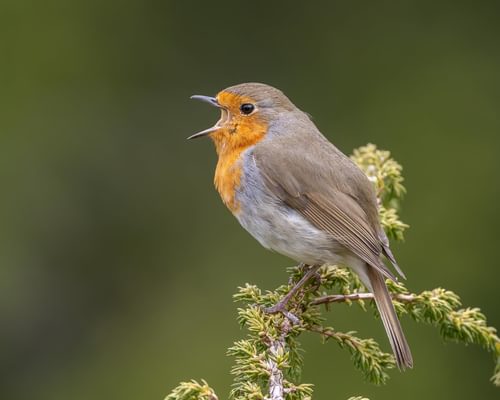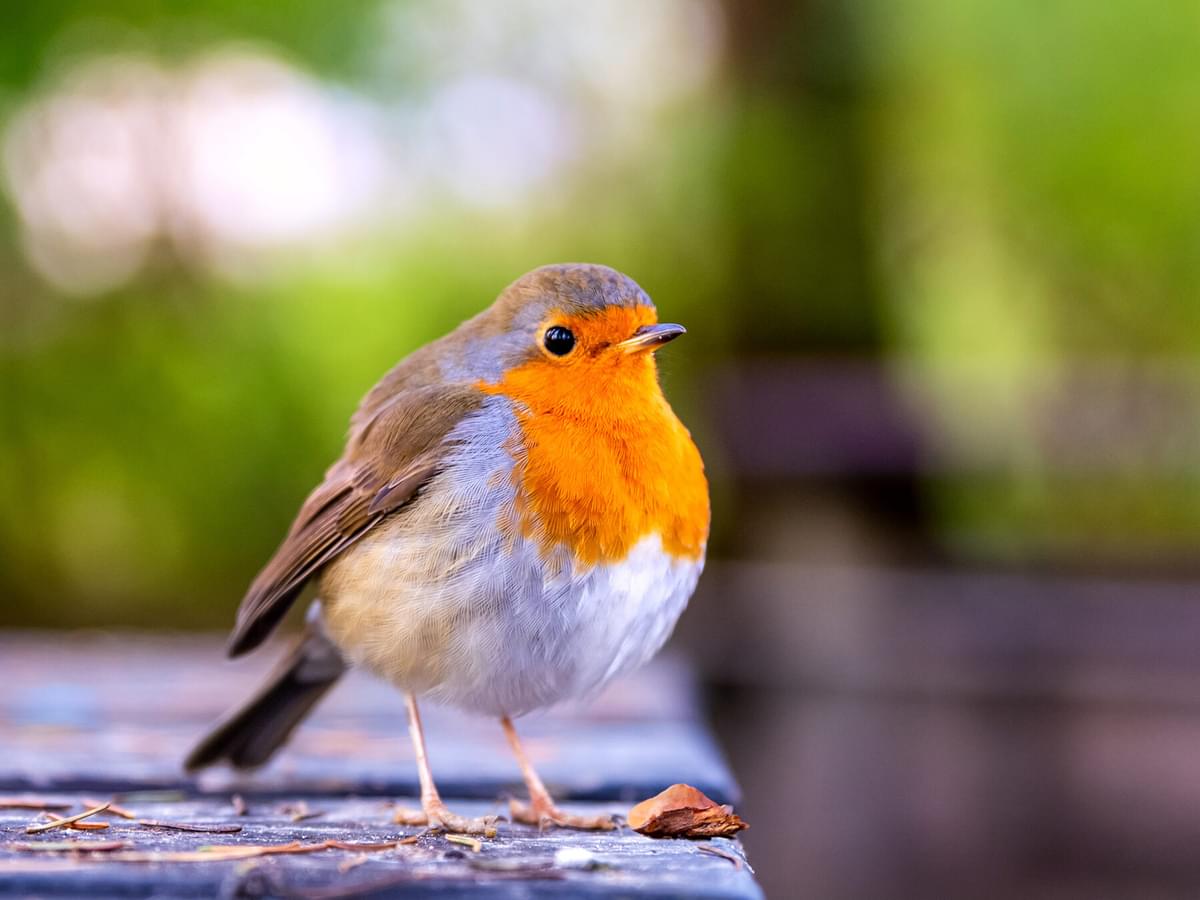In the UK, we're used to seeing robins pretty much everywhere throughout the year, but what does a baby robin look like? (also referred to as Juvenile Robins).
What does a baby Robin look like?
It's a common misconception that female robins don't have red breasts when they do. They are pretty much identical to male robins, and it can be almost impossible to tell them apart.
If you happen to see a robin lacking a red breast, you'll be looking at a juvenile robin.
Baby Robins look similar to adults, but the main difference is the lack of a red bib. They have spotted brown bodies and heads, and their underparts are lighter compared to older birds.
Robin chicks are born altrical (undeveloped), and because of this, they need feeding and caring by their parents. Their eyes are closed from hatching until about five days of age, where they will start opening before fully opening at usually eight days old.
They are also born without any feathers and will mainly be pink in colour, and it takes around three days for the feathers to start showing - although it'll take around 10 days for the body to be mostly covered in feathers.

A baby / juvenile robin

Robin feeding its young in nest
How big is a baby robin?
Recently fledged robins are similar sizes to adult birds, and the only real way to tell the difference is generally the lack of the red bib.
There is insufficient data on the actual weight and body length of juveniles.
What do you call a baby robin?
There is no specific term given for baby robins, and instead follow the typical naming conventions of other baby birds:
- Chick or Hatchling
- Fledgling
- Juvenile
- Adult
When are baby robins born?
It varies on whereabout in the world the population is, but in the UK, the breeding season usually runs from early April all the way through to mid-June. In parts of central Europe, it's usually from mid-May, and in other ranges, they can be born all the way through to July.
How many eggs do robins lay?
Robins usually lay clutches of between 4-7 eggs on average. It's not uncommon for robins to have up to three clutches a year. However, two clutches are the most common.
Learn all about Robin Nesting
What do robin eggs look like?
Robin eggs are mainly whitish but can be a bluish-white colour with small reddish spots on. The eggs are 20 x 15 mm and weigh around 2.4g (6% of this weight is shell).

European Robin nest with eggs
How long do robin eggs take to hatch?
Robin eggs are incubated for between 12 and 21 days before hatching, but the average is around 14 days.
Once the chicks have hatched, the female will immediately remove the egg shells from the nest. Occasionally, the egg shells may be consumed for extra calcium.
When do juvenile robins leave the nest?
It's usually between 14 and 16 days after hatching that robins will fledge from their nests. After leaving the nest, they will stay nearby with their parents for up to three weeks.
In May, these juvenile birds will move away from their natal sites but rarely move more than a few miles/kilometres.

A juvenile robin being fed by an adult
When do baby robins get red breasts?
It won't be until the late summer months, usually when the birds are between 2 and 3 months old, until the juvenile robins get their red breasts. This happens because a partial moult means they lose their speckled feathers.
However, before this, they still share the same round shape, long legs and head postures as their adult counterparts. This is why there is confusion surrounding if all robins have red breasts.
Robins are born without red breasts to avoid territorial clashes with other robins. Clashes of territory are the reason for up to 10 percent of deaths in adult robins in some populations.
What do baby robins eat?
In the first few days, baby robins will mostly have a diet of regurgitated foods from adult birds. As robins are omnivorous, this can include a whole range of things.
Their diets are mainly a mixture of invertebrates, seeds and fruit. After they get a bit older, bigger chunks of food can be given to the chicks - who become more demanding a few days older.
Robins are extremely intelligent when it comes to picking a nest site, as they'll generally only nest where the food supply is plentiful, meaning that when the chicks hatch, there's no shortage of food.

Robin sitting on nest incubating eggs
When can baby robins fly?
Out of all the feathers to grow, the flight feathers are the last. Once a baby robin fledges the nest after around 14 days, they are usually unable to fly straight the way and can take a couple more days to do so.
During these first few days outside of the nest, you may see fledgling robins hopping about and practising their flight with short efforts.
How long do baby robins stay with their parents?
Once young robins have fledged the nest, they will stay with their parents for up to three weeks. During this time, the fledged young will mostly be taken care of by the male birds - this is because the female will start preparation for the next brood.


